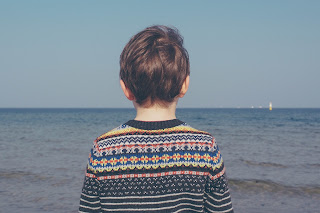Two articles you may have missed in The New York Times reiterate some important points about how to help children with two very different but very common difficulties – anxiety and disruptive behavior.
The first article, an opinion piece written by Dr. Perri Klass, whose work and writing have been featured in a number of our blog posts (check out her other informative pieces in
The Times here), reports on a meta-analysis that investigated the effectiveness of different therapies and drugs used to treat a variety of anxiety disorders in children. To read the meta-analysis on your own, see the reference at the bottom of this post. A meta-analysis is a large research undertaking that combines the results of many smaller studies to get a better idea of the big picture. This meta-analysis looked at a combined total of 7,719 patients between the ages of five and sixteen. As expected, the researchers found that exposure-based cognitive behavioral therapy (CBT) is a preferred treatment. With this type of therapy, children as young as five years old are exposed to what makes them anxious so that they can practice dealing with the triggers with support, while they simultaneously work on changing how they think about the things that make them feel bad. The researchers also found that the newer types of anti-depressants can be helpful, but they are best when used in combination with therapy (and they were found to be not as effective when used alone, as compared to the exposure-based CBT).
For those of us working in the field, this meta-analysis didn’t really tell us anything groundbreaking. It does, however, get the message out that there is an evidence-based way to help children who are suffering from the kind of anxiety that interferes with their ability to function at home and school. It also reiterates, for parents and caregivers who are seeking help, the importance of finding a therapist who focuses on this type of therapy in her or his work with anxious children.
The second Times article, from October, is another opinion piece, published in the
Fixes column, and written by Suzanne Bouffard. In her column, Bouffard describes the process of Collaborative Problem Solving, a technique developed by Ross Greene, who wrote a book we love to recommend at The Yellin Center -
The Explosive Child. Bouffard begins by describing the typical disciplinary methods used at many schools, even preschools, across the country. Children are typically removed from the educational environment as a disciplinary measure - they may be put in time out, forced to complete useless assignments as punishment, or even suspended from kindergarten. The main point that Bouffard makes here, and that is at the foundation of my field - school psychology - is that these exclusionary tactics may temporarily stifle unwanted behaviors, but they are also often psychologically harmful and, even more importantly, do not teach our youngest students what they should be doing instead. There’s an unfortunate persistent idea that kids behave well when they want to, but the truth is that kids behave well when they can. Taking a child who struggles with regulating her behavior and excluding her from the classroom and putting her in isolation, for example, does absolutely nothing to help her practice the skills she needs to do better next time.
Collaborative problem solving was described in one of my
previous posts on this blog. Bouffard’s piece takes the philosophy behind it and puts it in a very real context, with real examples of families who have seen what a difference it can make. I highly recommend reading the article and thinking deeply about the kind of discipline your child experiences at home and at school. It offers us the opportunity to ask ourselves some potentially difficult questions about whether we’re really using what the field of psychology likes to call best practices when helping our children and our students grow into well-adjusted citizens.
Wang, Z., Whiteside, S. P., Sim, L., Farah, W., Morrow, A. S., Alsawas, M., ... & Daraz, L. (2017). Comparative Effectiveness and Safety of Cognitive Behavioral Therapy and Pharmacotherapy for Childhood Anxiety Disorders: A Systematic Review and Meta-analysis. Jama Pediatrics, 171(11), 1049-1056.
Photo by Michał Parzuchowski on Unsplash





